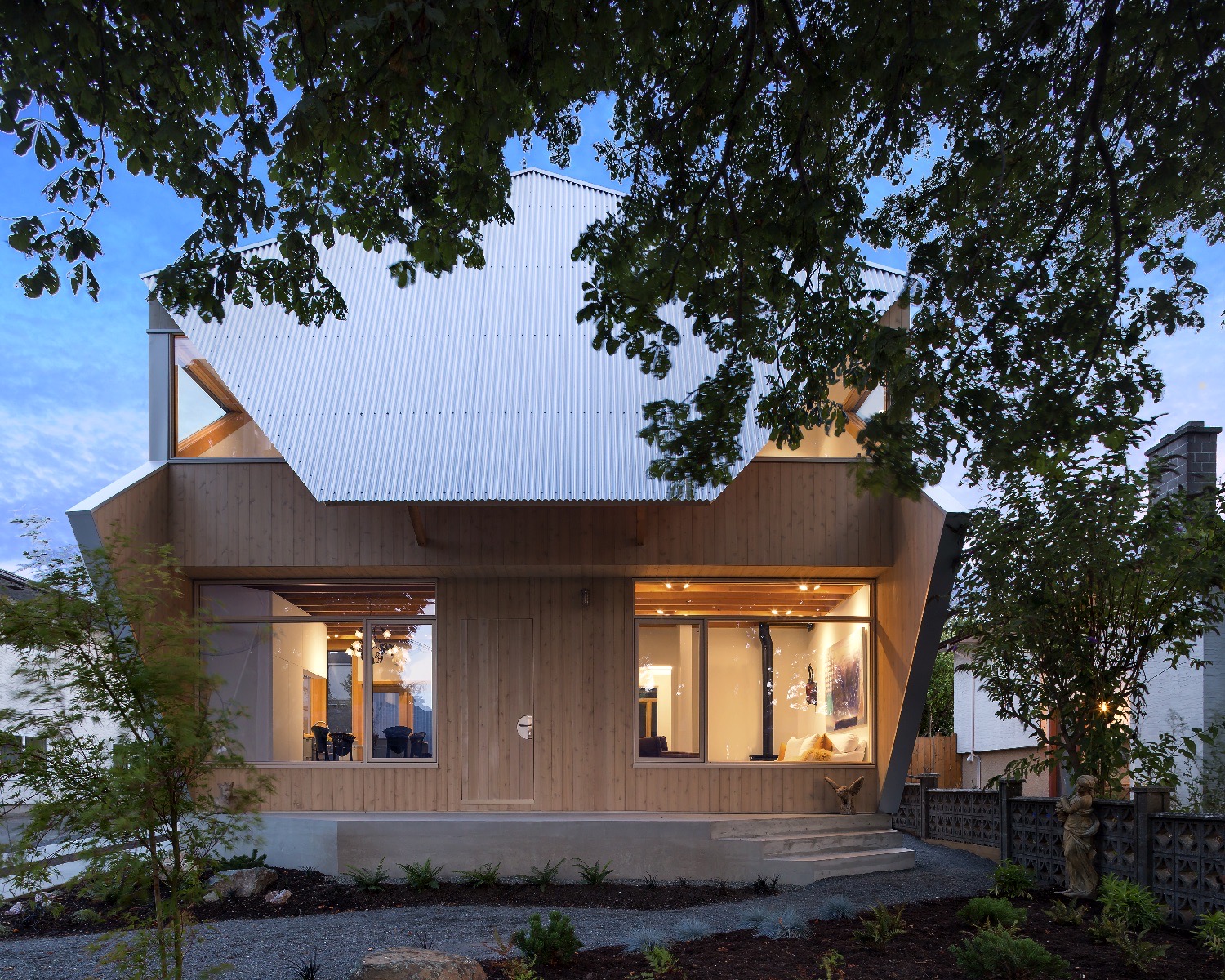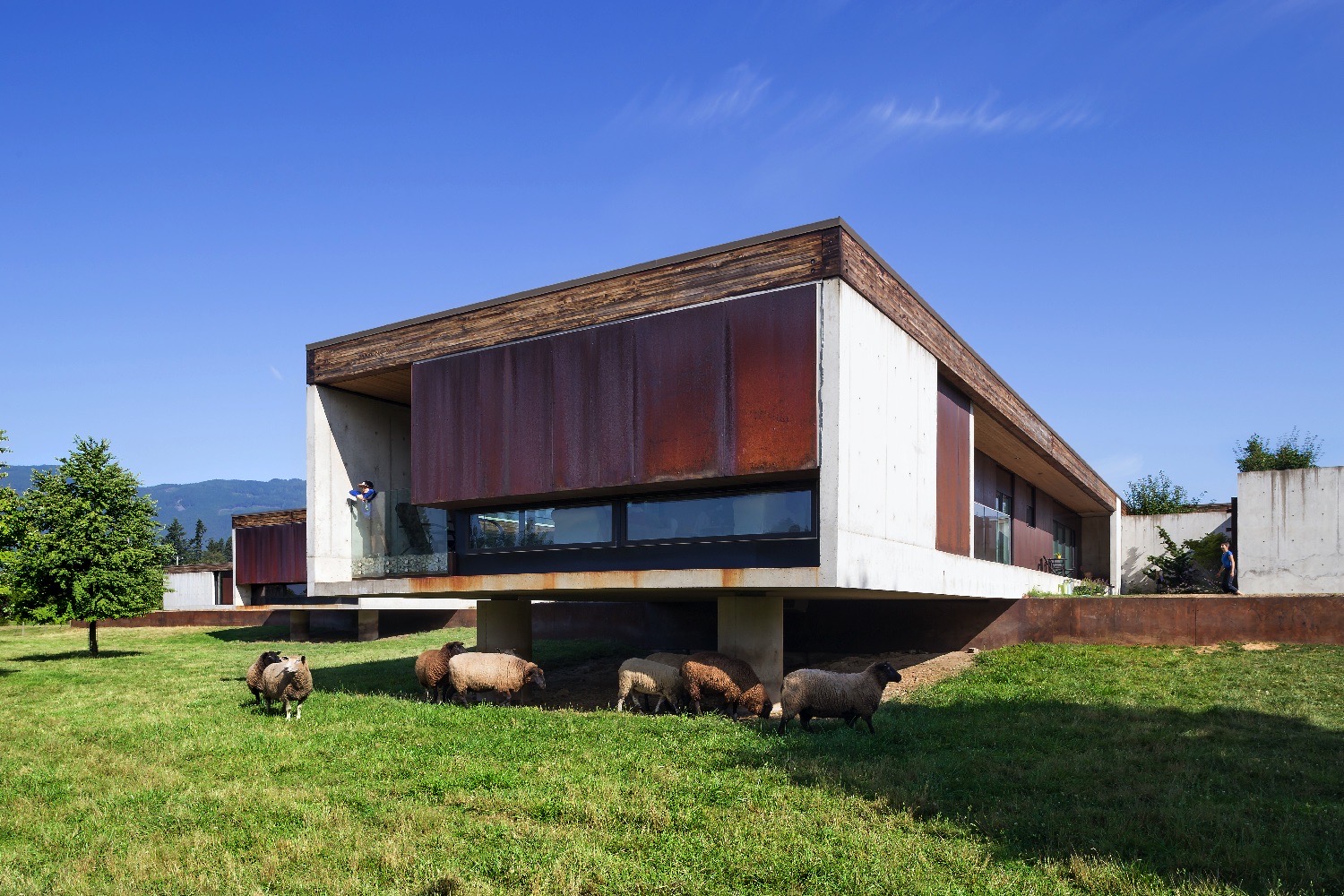Book excerpt: D’Arcy Jones Architects, 2009-2020
Barely at the mid-point of his career, D’Arcy Jones is already established as one of Canada’s most inventive designers of houses. As this book demonstrates, Jones is constantly searching for new forms, through reconsiderations of construction and space-making.
D’Arcy Jones Architects, 2009-2020
By D’Arcy Jones (Dalhousie Architectural Press, 2022)
EXCERPT FROM INTRODUCTION BY Trevor Boddy
 Barely at the mid-point of his career, D’Arcy Jones is already established as one of Canada’s most inventive designers of houses. As this book demonstrates, Jones is constantly searching for new forms, through reconsiderations of construction and space-making. The re-invention of the idea of the house is, for him, almost an obsession.
Barely at the mid-point of his career, D’Arcy Jones is already established as one of Canada’s most inventive designers of houses. As this book demonstrates, Jones is constantly searching for new forms, through reconsiderations of construction and space-making. The re-invention of the idea of the house is, for him, almost an obsession.
How is it that D’Arcy Jones has devised so inventive a series of houses as the 14 shown in this book, so variable in their design? All are different in detail and construction, yet each of them advances the notion of the enclave. One answer might be found in the architect’s biography. It is rare for an architect of his generation to have spent hardly any time working for other firms—in Jones’s case, this included brief periods working with Vancouver’s Nigel Baldwin and Acton Johnson Ostry while he was a student. Many architects, by contrast, spend their careers working out the “anxiety of influence” from former employers or a validated canon of prominent precedents, from which they borrow, too often simplistically.

It is also worth noting that currently many students do not graduate from Canadian architecture schools until they are over the age of 30, and are often over 40 before achieving professional registration. At this point, most have the responsibilities of families, property, and student debt; these factors can easily combine to make design careers short and conservative. D’Arcy Jones, on the other hand, founded his own firm in his 20s and fulfilled his professional registration while executing his own designs. When designers are not socialized into the habits of others, opportunities for individual invention increase.
This pattern also applies to Jones’s education. After a year in general arts at the University of Manitoba in Winnipeg, he went on to receive a degree in Environmental Design from that institution in 1995. He then moved to Halifax, where he earned a second bachelor’s degree in Environmental Design Studies from TUNS (now Dalhousie University). Returning to Winnipeg, he completed a professional Master’s in 1999. In that same year, he opened his own design practice, and it has been in operation ever since. His built work was being published in Europe and the United States a mere six years after he founded his firm, extremely early for a Canadian designer. All through his career Jones has immersed himself in unusually wide and deep reading—he is much more likely to cite inspiration from something he has read in the New York Review of Books than that online bible for his generation, dezeen.com.

Before Jones graduated from the University of Manitoba his parents relocated to Kamloops; they and their new neighbours became his first clients. Subsequently Jones established a partnership in Vancouver with Caralyn Jeffs, an architecture graduate who now works as the primary caregiver for the couple’s three children, including twins; the architect’s empathy for the needs of couples with children is grounded in his own experience, and many of his clients are at the same stage in the family cycle. A sense of community is crucial to Jones. His early practice was boosted by the modest house he designed for his own young family in 2007. Its completion prompted a string of requests for renovations and rebuilds in the same neighbourhood—one of them breathing new air into the tired formula of the split-level rancher, another finding privacy while wedged between larger neighbours, a third raising up a small house to capture light and increase space for a photo-based artist, a landscape architect, and their children. Noting this pattern in his work, Jones explains, “I take families seriously—we listen to them, observe them.”

A house is one of the most complex human inventions. There is no more practical or essential a structure, yet dwellings represent some of the highest cultural and spiritual aspirations. A well-conceived design for a house demands deep understandings of the lives it envelops. As Le Corbusier suggested, houses are “machines for living.” They are also exemplars of sociality, live-in artworks, membranes against the forces of nature, and shelters that nurture personalities. They represent one of the biggest investments that people make. Houses are our castles—though also our prisons, playthings, and our psychoanalysts.
